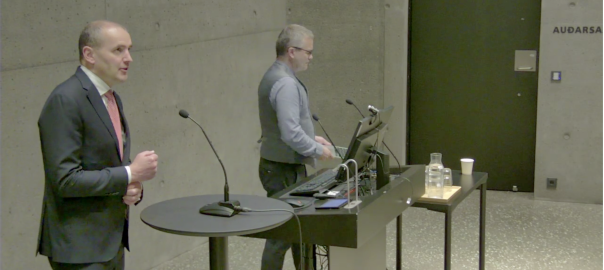


Talk in Iceland, June 16.
I wish! (Well, hopefully next year)… but anyway, I will give a 20-25 minute talk by Zoom, on Thursday June 16. The PHIVE conference (PROMOTING HERITAGE IN VIRTUAL ENVIRONMENTS) is kicked off by the President of Iceland, a noted Professor of History, and a few months older than me (so I still have time to become a head of state).
Title
Into the Heritage-Verse
Abstract
Proponents of virtual reality, extended reality, and the “Metaverse’ suggest the digital future of multiple entertainment and education worlds is imminent. And the field of virtual heritage (virtual reality and related technologies) is arguably over three decades old already.
If this is true, and given that we are saturated by phone-media, apps, and games, why is it so hard to find example of virtual heritage? What is stopping the uptake of these new technologies? And how can we use these new, imminent, and hyped devices and platforms for the benefit of digital heritage, or are there conceptual challenges still to be resolved?
Virtual travel interview
It looks like I am being (ZOOM) interviewed this week on the future of virtual travel by RMITV show The Cutting Room “Our show explores issues and topics in the world of screen media, and this week’s episode is themed around Virtual Reality.”
If all goes to plan I think the episode will be on C31 (Melbourne community TV) and then straight to RMITV’s YouTube channel next Monday (6 June).
Swords Sandals and Selfies
An abstract from a draft chapter. I have written the chapter but hope to revise it further. It is for a book entitled Screen Tourism and Affective Landscapes, out, I hope, early 2023.
The prospect and potential of videogame-induced tourism has only recently been discussed in academic publications. I will examine three possible reasons why, I will provide evidence to the contrary, and suggest new developments that may accelerate the impact of videogames on tourism (and the related experiencing of affective landscapes). My main case study will be Assassin’s Creed: Odyssey. This 2019 game draws the player into the exploration of idyllic and war-torn historic and mythic landscapes of Athens and Sparta, via questing and simulated violence. It also features a non-violent “Discovery” mode, photographical functions, and a Story Creator mode allowing quests (and in-game photos) to be designed and shared with other players. Beyond violent gameplay, Assassin’s Creed: Odyssey allows the exploration of idyllic historic landscapes and heritage sites. Given the company employs both high-quality designers and professional historians (and archaeologists), we can employ such sandbox games as both a pre-visitation visualisation tool and as a hybrid fictional and yet also factual learning environment.
Virtual Heritage: How Could It Be Ethical?
Abstract
Draft of latest book chapter (before revisions) by the editors. Now onto the next book chapter!
Ranging from modified adaption of commercial games (game mods) to multi-million-dollar 3D visualizations and web-based projects, virtual heritage projects have showcased cutting-edge technology and provided insight into understanding past cultures. Virtual heritage has the potential to safeguard unique cultural treasures from the ravages of war and neglect, with interaction techniques to communicate knowledge across time and linguistic divides.
Despite these advantages, at its core, Virtual Heritage (virtual reality and related immersive and interactive digital technology applied to cultural heritage) implies something not real, but an illusion simulated or artificially projected. It typically relies on highly specialized capture, rending and hosting technology created by highly trained individuals, running on high-powered equipment manufactured at great environmental cost. And the original material it simulates can be sacred, stolen, or contested. There are consequences and ethical implications for this illusory but expensive medium of cultural heritage (and, typically, “cultural heritage” means other peoples’ cultures), whether complicitly generated or not. While the research field of virtual heritage is several decades old, its specific ethical issues have not been extensively addressed (Hepworth and Church, 2018, de Broglie, 2018, Frischer, 2019), and specific challenges are not often covered by, say, digital archaeological ethics discussion (Dennis, 2021, Dennis, 2020).
To provide an overview of these ethical issues, four issues will be discussed in this chapter. Who determines the content, cultural ownership and overall decision-making; how both the depiction of personal or sacred assets and traces of people no longer with us, obsessions with photorealism rather than the complex topic of authenticity, and the dangerous allure of gamification; what needs to be preserved and related environmental issues; where and when the audience should be involved, motivated, and their feedback fed back into current and future projects.
Keywords: Cultural heritage, virtual heritage, virtual reality, serious games.
PhD scholarship available
A Framework for Developing Educational Games in and with Australian Museums
This PhD project focuses on reviewing challenges and successes in Australian museums (MOD, National Maritime Museum and the South Australian Museum) with the aim to develop a participatory open-ended game framework to encourage greater engagement, wider audiences, and increased visitation, as well as reuse of content, data, and related media.
The successful candidate will focus on either the evaluation and framework based on interviews, surveys and workshops with museum experts, or on developing overall game mechanics examples (game prototypes) showcasing best practice game techniques for showcasing Australian museum content, promoting reuse.
This project is funded for reasonable research expenses. Additionally, a living allowance scholarship of $28,854 per annum is available to Australian and New Zealand citizens, and permanent residents of Australia, including permanent humanitarian visa holders. A fee-offset or waiver for the standard term of the program is also included. For full terms and benefits of the scholarship please refer to our scholarship information.
URL here.
The slippery-sloped artistry of Transmedia
An author for a volume I have been recently editing asked us to agree on a definition of transmedia used by the author of another chapter. I can understand the concern, it is used in a variety of ways that may differ across fields.
But when you compare definitions across the two or so decades gaps and disjunctures appear. Consider this example:
Transmedia is commonly defined as a narrative or project that combines multiple media forms. A transmedia project may combine many different types of prints or prose text, graphics and animation, or work across multiple platforms, such as different types of social media platforms, interactive websites or advertising outlets.
What Does Transmedia Mean?
Then I went back to this 2007 post defining transmedia by Henry Jenkins, thinking, oh, this is more elastic, powerful, but also amorphous, than recent definitions. Henry Jenkins, in a 2007 post recounted how he described it in class notes, gives ten criteria, but are these ten all necessary and sufficient?(https://techopedia.com/definition/30425/transmedia…)..
Did Jenkins deliberately conflate authorial intention and success in creating transmedia with how effectively and creatively it is/was taken up by an engaged, contributing audience?
Take (the American tv series) LOST (his example). My understanding is the script changed and the series extended because they did not fully plan for its success or continuation (at least as a tv series). Be that as it may…
- Did LOST really, creatively, deliberately leverage a message or narrative across media or did audience extend it of their own accord? In other words, does transmedia allow for both an auteur-centric definition (it is directed by an individual or singular team) or must transmedia be extended by an audience (more than normal media)?
- Must the reception of transmedia be all carefully planned and the narrative orchestrated across various media, with content for each media form specifically designed to leverage its strengths?
- If a franchise is developed for one medium then new media are deployed, must there be a pre-mediated plan?
- Must the narrative require the audience to experience each of the separate media forms?
- Given transmedia franchises can be shared between companies, individuals, and even between and over generations of writers, artists, and designers, does transmedia have to have a central home or most authentic/authoritative origin?
I like these notes on transmedia, I just think they could be strengthened and separated, or the term should be broken up in relation to whether it is open and interactive, premeditated and authorial, or multiversal (designed to have overlapping but not always harmonious multiverse narrative “worlds”).

Old ideas
On cleaning up old email I found these cursory ideas in 2013 when I was invited to Curtin.
Here are notes I jotted down as part of a sketch for a Centre of Excellence idea but here I am only listing the (then) resources
WE HAD (in 2013)…
- Specialties in Film Screen Journalism Architecture Media Internet Studies Library and Information Studies..
- Access to GLAM (*Galleries Libraries Archives Museums•an onsite Gallery)
- A Library that wants to develop a research field
- New Visualisation Facilities and iVEC partnership (all 4 WA universities)
- A new Visualisation Degree/Connective Media area /Curtin Data Visualisation Facility (one display installed already.)
MAIN MISSION
- Integrating Humanities research with new tools and new ways of communicating and sharing with audiences
- Creating tools and case studies to show humanities scholars and organiSations how to make convincing visual arguments
- Developing, maintaining analysing and advising how these tools methods and projects are best used/taught/deployed
AREA
- Developing tools and methods to help scholars make visual arguments
- Train curators and visualisation specialists in contextual technical and humanistic skills and competencies
- Evaluate whether tools and content best suits specialist and generalist audiences
- Provide single entry point for interested industry and NGOs to contract projects and employ staff
OPPORTUNITIES
- New intellectual precinct Curtin town
- New science museum, expansion of Perth and entertainment industry
- Urban visualisation and idea prototyping, digital humanities
- New forms of curation and collaborative technologies
- New low-cost means of design prototyping and production, community hosting, online and on demand printing and creation, the internet of things, multimedia and creative archives..
LOOKING BACK
Now 9-10 years later, after a UNESCO chair (first for the University), involvement in the Computation Institute, grants, talks, workshops, involvement in other research centres and institutes, and a fairly long list of publications, completed PhD theses, grants, and some key projects (camera tracking in 3D, photogrammetry, mixed and augmented reality, Linked Open Data, GIS apps and systems, serious games and virtual environments), I look back at this and think about what happened in the end , my part, what didn’t eventuate, and why. The ideas aren’t useful any more (at least in their original form) but the reasons why some of them were not developed is worth pondering a bit further, maybe in a new post.
PhD scholarship at UniSA on games in Australian museums
“A Framework for Developing Educational Games in and with Australian Museums“
The University of South Australia in Adelaide has graciously offered us (myself, and Drs Susannah Emery and Julie Nichols) a UniSA scholarship, (Enterprise Research Scholarship ERS), alongside a fee-waiver, to examine the above research area, with the help of 3 museum partners. I am sorry, I think it has to be an Australian or NZ citizen or permanent resident, but I will confirm it.
Summary:
… work on developing an overview of the challenges and successes of developing educational games in and with Australian museums … examine how 3D online models could be more effectively used with museum-based learning activities and the student could review the educational limitations, successes and failures of past 3D digitalisation exercises in terms of how effectively they can be incorporated with museum learning objectives as well as possibly outline a future framework linking 3D heritage model repositories and museum education strategies.
More details to come.
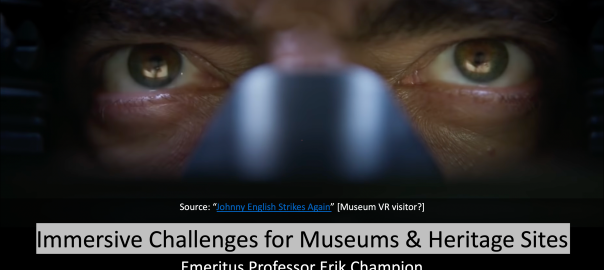
Immersive Challenges for Museums & Heritage Sites
I will give a talk tonight via Zoom to UniSA IVE colleagues on the above topic.
Time: 4PM
2022 IVE Research Seminar Series
Please join our next IVE Seminar.
Presenter:
Prof. Erik Champion
Enterprise Fellow, UniSA Creative
Title:
Immersive Challenges for Museums and Heritage Sites
Abstract:
This talk will cover recent and persistent challenges facing museums, practical issues with the implementation of virtual reality, games and gamification, and some case studies exploring potential solutions, particularly in the area of cultural heritage.
Bio:
Erik Champion is currently Enterprise Fellow (Architecture, Creative) at the University of South Australia; Emeritus Professor at Curtin University; Honorary Research Professor at ANU; and Honorary Research Fellow at UWA. He was recently a chief investigator on 4 Australian Research Council grants, Curtin University’s first UNESCO Chair (of Cultural Visualisation and Heritage) and Visualisation theme leader and Steering Committee member of the Curtin Institute for Computation.
https://people.unisa.edu.au/Erik.Champion
Date & Time: 5 April 2022 (Tuesday) 4pm (Adelaide ACST — Australian Central Standard Time UMT +9 hours 30 minutes)
Where: Zoom
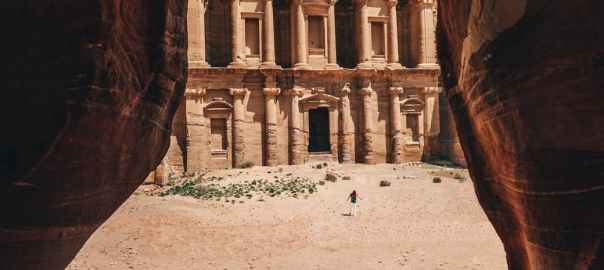
One Aspect of Place is Missing?
I enjoyed reading through the recent “Geographies of Place in Digital Art History” written by people I know (and one I have worked with and written papers with). But as an intellectual exercise, do you see anything missing from the concept of place as stated in the article?
Geographies of Place in Digital Art History
Sarah Middle, Ryan Horne, David A. McMeekin, Chiara Zuanni, and Alex Butterworth International Journal of Humanities and Arts Computing 2022 16:1, 94-109
theory of change – a better way for museums to think about impact
Paul Bowers posted this “Theory of Change” for museums, I greatly like it, I do wonder if museum people agree with it or are even doing it already.
Museums today describe their impact in overreaching isolationist terms. This exhibition will create science literacy. This gallery will create artistic excellence…
The basic logic is really simple; working backwards to define the conditions in which the goal you seek will simply ‘be’
Define your end goal — what is the eventual outcome you’re trying to achieve?
Write down the pre-requisites for this occurring
Write down the pre-requisites for these occurring
Continue until your organisation / project appears.
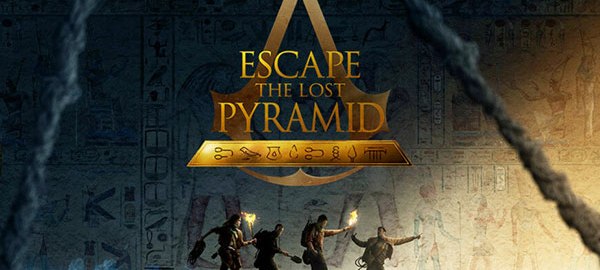
Excellent article on Assassin’s Creed (and history)
Well, in French, on Ubisoft’s relationship with historical reconstructions and history-inspired escape rooms:
CAA 2022, Oxford
This year the Computing Applications and Quantitative Methods in Archaeology Conference is running in person in Oxford, UK and virtually. CAA2022 will be held 8-11 August 2022.
If you are interested, CAA2022’s first session is calling for papers on cultural presence. Elaine contacted me about this for the last CAA (that was postponed) and it sounds very interesting so, hopefully, some of you can make it. You can also submit individual papers to CAA2022.
S01: iN Deep: Cultural Presence in Immersive Educational Experiences (Other)
Elaine A Sullivan, University of California Santa Cruz
Sara Perry, Museum of London Archaeology
Paola Derudas, Lund University
Virtual Reality (VR), Augmented Reality (AR), and Mixed Reality (XR) technologies are increasingly incorporated into university classrooms and public education in the GLAM sector (galleries, libraries, archives, and museums). The potential to use these technologies to engage students and the public with archaeological knowledge (such as site reconstructions, artefacts, or re-imagining the activities of past peoples) is exciting, but these forms of representation, including the use of individual headsets, tablets, and personal mobile phones, come with particular challenges. In his book Critical Gaming (2015), Eric Champion argued that virtual realities should express ‘cultural presence,’ the meaning and significance of a time, place, or object to people of the past.
Hyper-reality, photogrammetry, and ever-increasing levels of ‘accuracy’ in 3D models do not inherently convey aspects of cultural significance and meaning, and many VR/AR/XR experiences fall dramatically short of the goal of expressing the importance of past places and things to
their original communities. Emphasis on technological and (especially) hardware innovation often deflects attention from critically engaging with questions of meaning-making.
This panel asks those creating or intensely using Archaeology VR/AR/XR to focus NOT on software, hardware, or the latest technical innovations, but on how we as archaeologists can better design, create, or curate experiences that inspire and educate students and the public on the cultural importance of archaeological spaces, objects or themes.
What are successful techniques to aid a visitor to better understand the original context of an object now placed in a (often far off) museum or gallery? How can university instructors incorporate the (problematically individual) headset or mobile experiences into pedagogy to provide meaningful and active student learning? How can complex data be usefully layered or curated so that multiple types of museum visitors or classes could find it informative and emotionally resonant? How can we turn these increasingly popular technologies into serious spaces of cultural learning and curiosity, moving beyond the initial ‘wow’ factor
Format
Instead of traditional 20 minute talks, we request that participants present 8-10 minutes in depth on one VR/AR/XR experience they have designed and/or utilized in a university or GLAM setting (not a general review of multiple types of work). We ask participants to present and explain aspects of design and interaction and their intent in that experience; or, if the content was not designed by the presenter, how content was incorporated, curated, or enhanced for the classroom or GLAM experience.
Specifically, we ask presenters to think thoughtfully and critically about how we might collectively learn to use these technologies in more informed ways, including: What types of interactions with students or the public have shown promise, and how might we build on those successes? What practices have not worked, and how might we learn from our failures? What particular aspects of archaeological and cultural heritage knowledge are best emphasized in the VR/AR/XR experience? What is key to re-using content created by others, including content created by non-archaeologists?
The session will be divided into four sections:
- 1st group of presentations, ~five presenters (10 minutes per presentation)
- a ~30 minute ‘hands-on’ period** where participants and the audience will be able to engage/interact directly with the presented content from both presentation groups
- 2nd group of presentations, ~five presenters (10 minutes per presentation)
- concluded by a ~30-minute Q&A session for the full group of presenters and audience
We hope this format will allow the audience to engage directly with the content before opening up the session for questions and comments. The goal is to turn this session into a workshop that helps all present work more critically with VR/AR/XR content and improve how we communicate scholarly information at the university and GLAM setting.
**We therefore ask participants to commit to bringing their discussed content uploaded or downloadable in some format that can be shared directly with others: including (but not limited to) VR headsets, Google cardboard, AR apps pre-installed on tablets or smart phones, etc.
References
Champion, E. (2015). Critical Gaming: Interactive History and Virtual Heritage. Ashgate Publishing, Ltd.
my work lately
My work lately, here is what I sent to IVE for their news as a new member:
Erik Champion was invited onto the advisory board of MOD museum (https://mod.org.au/).
Invited research mentor/consultant to UNSW and UTS researchers as a consultant to Outside Opinion.
Reviewed for various EU and Israel research funding organizations.
- Invited to talk at the National Museums of World Culture, run by the Swedish government, on games and museums, 19 April 2022. https://www.varldskulturmuseerna.se/en/about-us/
- Invited keynote, ERC Advanced project “An-iconology. Theory, History, and Practices of Environmental Images” (AN-ICON), University of Milan, Palazzo Feltrinelli, Lake Garda, Italy, April 20-23 (or virtual). Update: no longer attending (or presenting) as travel looks difficult still (University ban on international travel may lift soon, but not in time). Oh well.
- Invited to Cambridge for edited book chapter workshop on Digital Heritage Ethics, in July 2022.
- Invited to speak at NTNU Trondheim, Norway as part of successful Erasmus grant led by Aleka Angeletaki (NTNU Trondheim).
- Erik Champion published the academic monograph Rethinking Virtual Places, in Nov 2021,by Indiana University Press, in their Spatial Humanities series. https://iupress.org/9780253058355/rethinking-virtual-places/ “An essential contribution to a very current topic” wrote Marc Aurel Schnabel, Dean of the Wellington Faculty of Architecture and Design Innovation, Chair Professor Architectural Technology, Victoria University of Wellington.
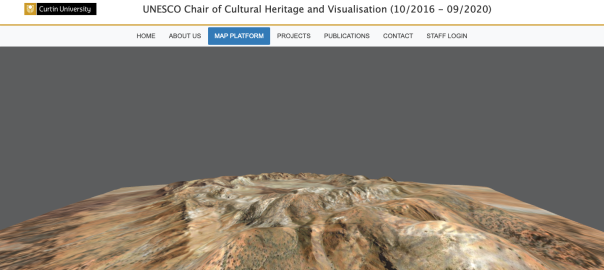
3D, Maps and DBPedia
The UNESCO Chair of Cultural Heritage and Visualisation (10/2016 – 09/2020) project at https://unesco-chv.curtin.edu.au will be shut down in June 2022.
Before then feel free to look at the online Australian map platform with 3D models, Linked Open Data, DBpedia, open data etc… https://unesco-chv.curtin.edu.au/mapplatform but please allow 20-30 seconds for some of the larger 3D models to load.
It was developed for Ikrom Nishanbaev’s PhD project, (supervised with Dr David McMeekin), the thesis by publication has just been successfully reviewed.
Thank you to Ikrom, David, the GIS and cultural heritage people who provided feedback and the reviewers.
Interesting to note Ikrom started the PhD in humanities then when I left Curtin University he moved to Science and Engineering. So it is arguably a truly interdisciplinary Digital Humanities project.
One of his papers received an award. The papers are listed at:
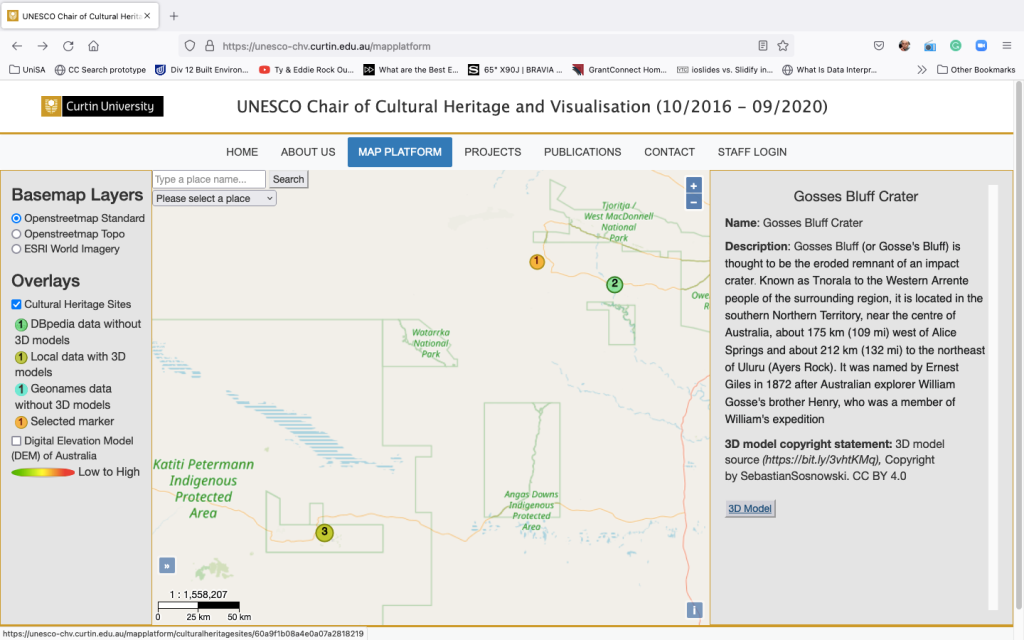
PhD scholarships at UniSA in South Australia
There are two PhD scholarships at the University of South Australia, in Built Environment and Design, that may interest Australian or NZ citizens or Australian permanent residents:
Details of the supervisors are listed against the projects.
No, I am not a supervisor for either, I am currently helping PhD students at my last university submit their theses (two passed so far, three to go!)
To offer a PhD scholarship-supported project at UniSA, I have to propose and have accepted a project, then students can apply. For self-funded PhD study, students can apply straight away.
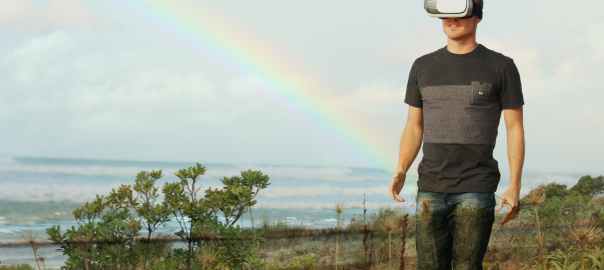
MetaVerse VS XR
If you read this conversation article, the Metaverse is basically XR (extended reality), not Neal Stephenson’s Snowcrash.
The Conversation is full of conflicting opinions on what is or should be the Metaverse (and some flatly refuse to let Facebook control it, even if Stephenson won’t sue Facebook for stealing the term): here is an article that wanders around then ends on a decisive point I agree with:
What is the metaverse? A high-tech plan to Facebookify the world
The current version of Facebook may increase your ability to connect to other people and communities. But at the same time it limits how you connect to them
And the 22.7.2021 The Verge Zoom Interview with Mark Zuckerberg is interesting as well.
Mea culpa
If you have asked me to review or write or supervise and I have not got back to you (I think I have, but there was a large 2022 backlog), I apologize. 4 overseas grant applications to review, 3 books to finish writing or editing, 4 of 8 book chapters to complete, some journal articles, and ensuring 4 PhD students submit and pass (at another university). Plus, I teach. There are some technical things I really want to upskill on. And I’m changing my research areas, a little. 2022 will be interesting.
Book chapters task list
I know I said I was cutting back on book chapters but …
- Champion, E., Nurmikko-Fuller, T., & Grant, K. (2022: invited). Chapter 12 Alchemy and Archives, Swords, Spells, and Castles: Medieval-modding Skyrim. In R. Houghton (Ed.), Games for Teaching, Impact, and Research UK: De Gruyter. Invited. Chapter sent.
- Champion, E., & Hiriart, J. (2022). Workshopping Board Games for Space Place and Culture. In M. Lasansky & C. Randl (Eds.), Playing Place: Board Games, Architecture, Space, and Heritage. Cambridge, Massachusetts, USA: MIT Press. Invited. Chapter sent.
- Champion, E. (2022). Not Quite Virtual: Techné between Text and World. In B. Mauer & A. Salter (Eds.), Reimagining the Humanities. Anderson, South Carolina, USA: Parlor Press. Invited. Chapter sent.
- Champion, E. (2022). Ubisoft’s Archaeology and History-Making: From the Inside. In E. Champion, & J. Hiriart, (Eds.). (2023: in progress). Assassin’s Creed in the Classroom: History’s Playground or a Stab in the Dark? De Gruyter: Video games and the Humanities series.
- Champion, E. (2023). Swords Sandals and Selfies: Videogame Tourism. In E. Champion, C. Lee, J. Stadler, & R. Peaslee. (Ed). (2022: in progress). Screen Tourism and Affective Landscapes. Routledge.
- Champion, E. (2022). Reflective Experiences with Immersive Heritage: A Theoretical Design-Based Framework. In A. Benardou & A. M. Droumpouki (Eds.), Difficult Pasts and Immersive Experiences. London, UK: Routledge. Invited. Chapter sent.
- Champion, E. (2023: pending). Title to be advised. Invited. Games and Geography. Germany, Springer-Nature.
- Champion, E. M. (2023: pending). Digital Heritage Ethics (tbc). In A. Pantazatos, T. Ireland, J. Schofield, & R. Zhang (Eds.), The Routledge Handbook of Heritage Ethics: Routledge. Workshop planned at Cambridge Heritage Research Centre, UK, June 2022. Invited. Still to be completed and reviewed. Invited.
